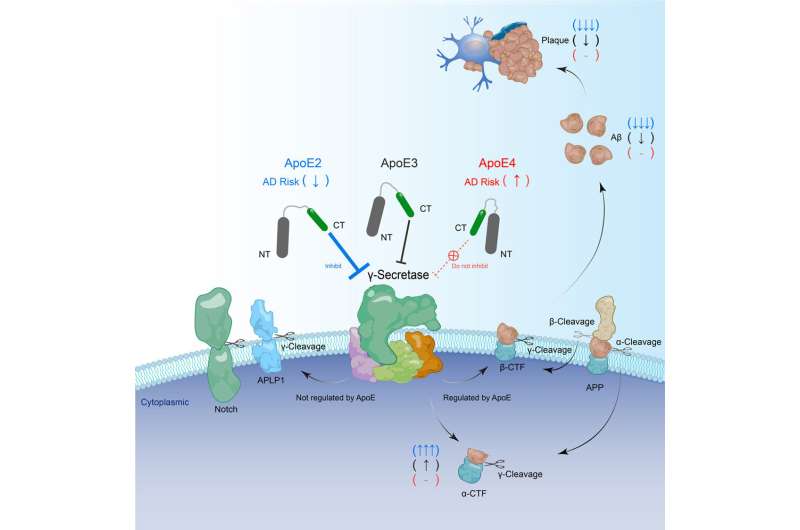This article has been reviewed according to Science X's editorial process and policies. Editors have highlighted the following attributes while ensuring the content's credibility:
fact-checked
peer-reviewed publication
trusted source
proofread
Researchers discover missing link between risk genes associated with Alzheimer's disease

Alzheimer's disease (AD) can be divided into rare early onset familial AD (fAD) and common late onset sporadic AD (sAD) that impairs the memory and cognitive functions of older people worldwide.
While the formation of amyloid plaques is the common brain pathology in both fAD and sAD, the genetics of fAD and sAD are distinct, and it could be argued that distinct pathogenesis mechanisms may be involved; therefore, different treatment strategies should be considered. In this regard, the billion-dollar question is whether targeting amyloid plaques is the correct strategy for the treatment of the common sAD.
In a study published in Neuron, Prof. Chen Yelin's group from the Interdisciplinary Research Center on Biology and Chemistry, Shanghai Institute of Organic Chemistry of the Chinese Academy of Sciences, provided an answer to this question.
The researchers uncovered the mechanistic relationship between the most common pathogenic risk factor of sAD, ApoE4, and the disease-causing genetic factors of fAD that directly promotes the formation of amyloid plaques, providing a missing link between the common sAD and rare fAD.
Specific mutations in the genes that encode enzymes for processing amyloid precursor protein (APP), including APP itself and γ-secretase cleavage subunits (PS1 and PS2), directly promote the development of fAD by accelerating the formation of amyloid plaques.
However, ~99% of the common late onset sAD do not carry mutations in APP or PS1/2. In contrast, individuals who carry two copies of ApoE4 have a tenfold increased risk of developing late onset sAD compared with people with normal ApoE3. Another variant, ApoE2, can significantly reduce the risk of sAD.
The striking impact of different ApoE variants on the development of sAD has also been a longstanding puzzle in the field as the amino acid sequences of ApoE2, ApoE3 and ApoE4 differ by only 1-2 amino acid residues.
A direct and differential inhibition of the γ-cleavage of APP by different ApoE isoforms was found by the researchers, and they demonstrated how ApoE isomers may change the risk of developing sAD. ApoE2 shows the strongest inhibitory activity on γ-cleavage of APP, while ApoE4 loses this activity.
This finding provides the missing link between the risk genes of fAD and sAD, suggesting that abnormal γ-cleavage of APP is the common pathogenic cause of fAD and sAD. This study suggests the C-terminal region of ApoE as a substrate-specific γ-secretase inhibitor with therapeutic potentials.
More information: Xianglong Hou et al, Differential and substrate-specific inhibition of γ-secretase by the C-terminal region of ApoE2, ApoE3, and ApoE4, Neuron (2023). DOI: 10.1016/j.neuron.2023.03.024




















